Catholic Customs
 |
 |
 |
 |
 |
 |
 |
The Medieval Spirit of Advent &
the Rorate Mass
Paratus sum ad Adventum Domini ("I am ready for the coming of the Lord").
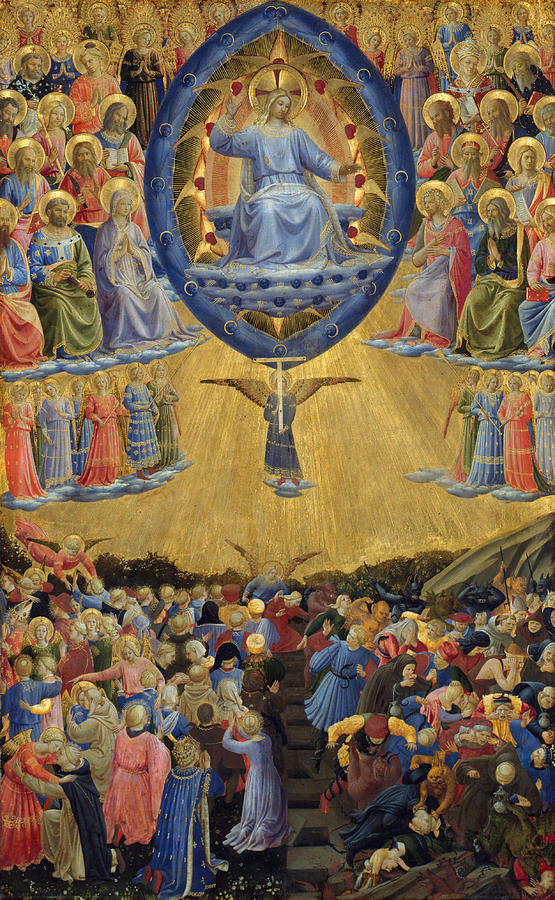 This profound statement gave origin to Advent (from the Latin Adventus which means "coming"), the word used to mark the liturgical season before Christmas. (1) Every good Catholic of the past had this spirit of anticipation when observing their Advent.
This profound statement gave origin to Advent (from the Latin Adventus which means "coming"), the word used to mark the liturgical season before Christmas. (1) Every good Catholic of the past had this spirit of anticipation when observing their Advent.
To become ready for the coming of the Lord, the Church gave us Advent as a period of penance and prayer to become ready so that by Christmas we can joyfully say "I am ready for the Judgment Day to see the Just Judge in His Glory." Indeed, it was a pious belief of many that Our Lord's Second Coming would come in Advent.
Advent is a new beginning of another liturgical year, a chance to prepare for the Second Coming of Christ as well as the coming of Our Lord in His Nativity.
In the Middle Ages, Catholics took this period of preparation seriously, treating it like a small Lent. Fasting, almsgiving and penance were practiced with fervor. Every action, word and thought was carefully directed towards insuring that the new Church year would begin well and that it would be a year of growth in sanctity and union with God.
The Advent Fast
The Council of Saragossa held in 380 stipulated that Catholics ought to attend Mass on all the days between December 17 and the feast of the Epiphany on January 6. Fasting was officially prescribed by St. Perpetuus of Tours in 480 when he decreed that every Monday, Wednesday and Friday from the feast of St. Martin (November 11) until Christmas would be a day of fasting.
Abstinence from flesh meat was also decreed for every day of Advent, and the offices of the Mass were celebrated as they were in Lent. (2) These fasting practices spread from France to England, Italy, Germany, Spain and the other countries of Christendom. (3)
These 40 days soon became known as Quadragesimal Sancti Martini (Forty Days Fast of St. Martin or St. Martin's Lent). The feasting and merriment at the feast of St. Martin was the last celebration that the Medieval Catholics had before the Advent fast, so it took on many aspects of Carnival. (4)
The fasting obligations varied from region to region including different days and lengths of time according to ecclesiastical precepts or private devotion, but they never acquired the status of a positive Ordinance. By the 9th century, the number of Sundays in Advent was reduced in Rome, and Advent was instituted as a liturgical season including four Sundays.
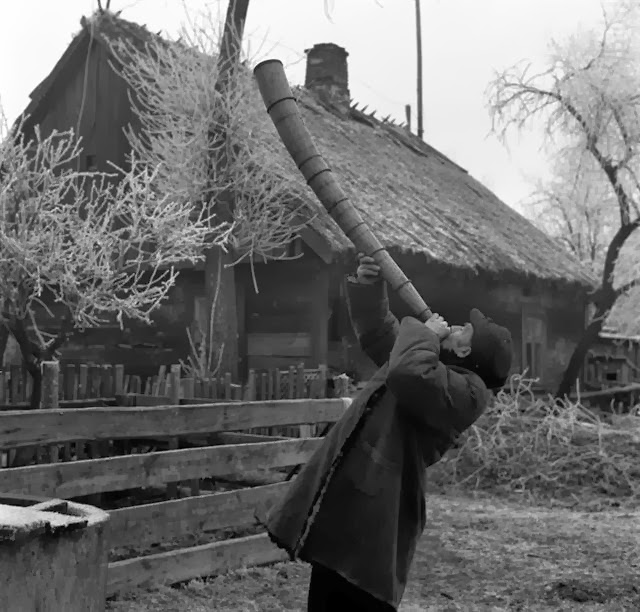 The laws of fasting during Advent were lessened over the years, but even up until 1917 in America there was a prescribed law that Fridays during Advent were days of fasting as well as abstinence. (5) Eastern Catholics still observe a 40 day fast before Advent which is called "St. Philip's Lent" or the "Short Lent" in Greece, since it is less severe than the Great Fast of Lent. The fasting begins on November 15, the day following the Eastern feast of St. Philip (November 14). (6)
The laws of fasting during Advent were lessened over the years, but even up until 1917 in America there was a prescribed law that Fridays during Advent were days of fasting as well as abstinence. (5) Eastern Catholics still observe a 40 day fast before Advent which is called "St. Philip's Lent" or the "Short Lent" in Greece, since it is less severe than the Great Fast of Lent. The fasting begins on November 15, the day following the Eastern feast of St. Philip (November 14). (6)
The Medieval spirit of Advent is well described by Dom Gueranger:
"We must look upon Advent in two different lights: first, as a time of preparation, properly so called, for the birth of Our Savior, by works of penance; and second, as a series of ecclesiastical Offices drawn up for the same purpose."
Indeed, in many Catholic countries this was the spirit with which Catholics observed the season: many people attended daily Mass and observed these weeks as a time of penance and contemplation to make themselves ready for the coming of the Christ Child.
The Rorate Mass
In some countries, "Golden Masses" or "Rorate Masses" were said before dawn every morning from the first Sunday of Advent until Christmas Eve. Men, women and children walked to these Masses carrying lit candles and torches. The Rorate Masses began in the pre-dawn darkness.
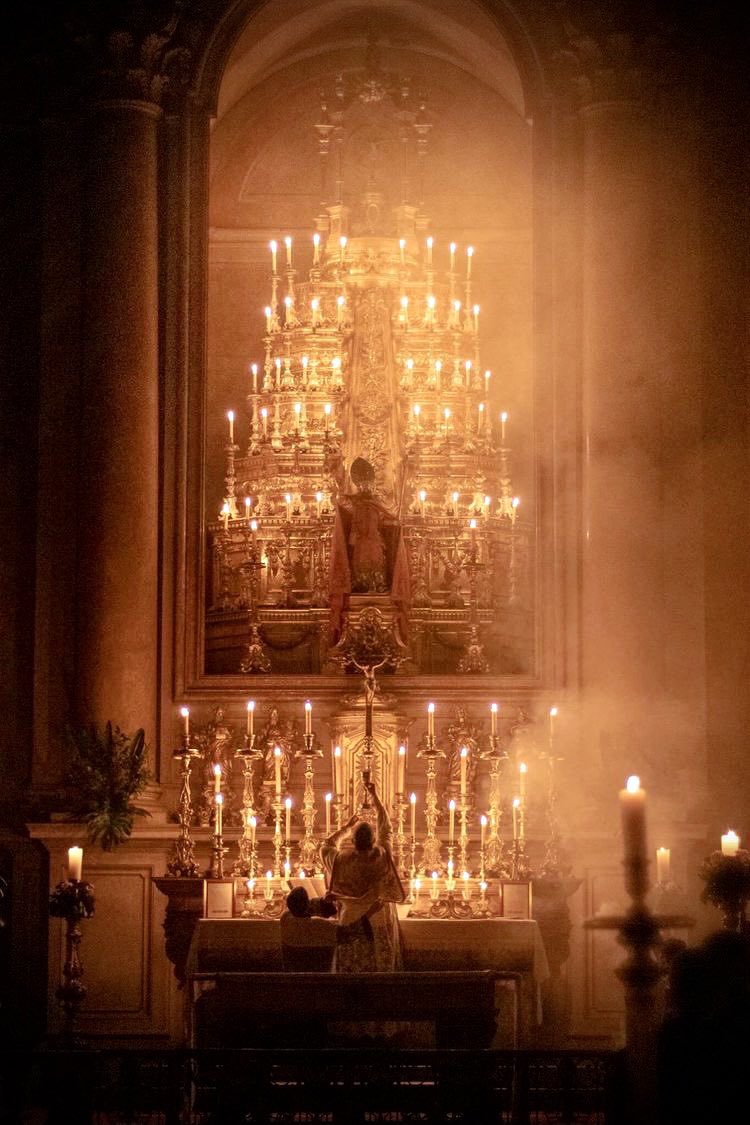 The Church was lighted only by the altar candles. By the end of the Mass the first rays of dawn were just beginning to touch the earth, symbolic of the coming of Our Lord Who dispels darkness. Our Lady is the focus of these Masses at which the priests are permitted to wear white vestments in her honor. (7)
The Church was lighted only by the altar candles. By the end of the Mass the first rays of dawn were just beginning to touch the earth, symbolic of the coming of Our Lord Who dispels darkness. Our Lady is the focus of these Masses at which the priests are permitted to wear white vestments in her honor. (7)
In the early mornings and evenings of Advent, the Polish people were reminded of the angelic trumpet call that will announce the Judgment Day by the deep resonating sound of men playing the ligawka, long horns two to three yards long made of willow or linden wood. These horns called the people to the early morning "Rorate" Mass. Men were awakened by this horn even if they were half a mile away, because the horn's sound travelled a long distance. (8)
This custom was – and still is – observed in the Netherlands in the province of Overijssel, where it is known as Midwinterhoorn Blazen (Blowing the Midwinter Horn), and is believed to have originated over 2,000 ago. The people from the area begin making their Midwinter Horns in Advent out of birch bark. The horns are blown over frozen wells to carry the solemn tones throughout the whole countryside. The stirring tone of these horns symbolically banishes winter and announces the coming of Our Lord.
One master horn maker from Denekamp described the sound of the horns: "On a winter's night when you hear many horns, sounding from all directions, across ice-sheeted meadows and everything is black and still, then the music is beautiful. The sound carries great distances – sometimes as far as three kilometers." (9)
Contemplation & penance in society
Many of the rules followed in the penitential season of Lent were also observed in Advent, although with less rigor. Marriages were forbidden during Advent and many Catholics abstained from the marital embrace. In Central and Northern European countries, peasants had to have all the field work finished before the beginning of Advent. Unnecessary travel and public amusements were also limited. In many countries, loud parties, celebrations and dances were forbidden during the Advent season. (10)
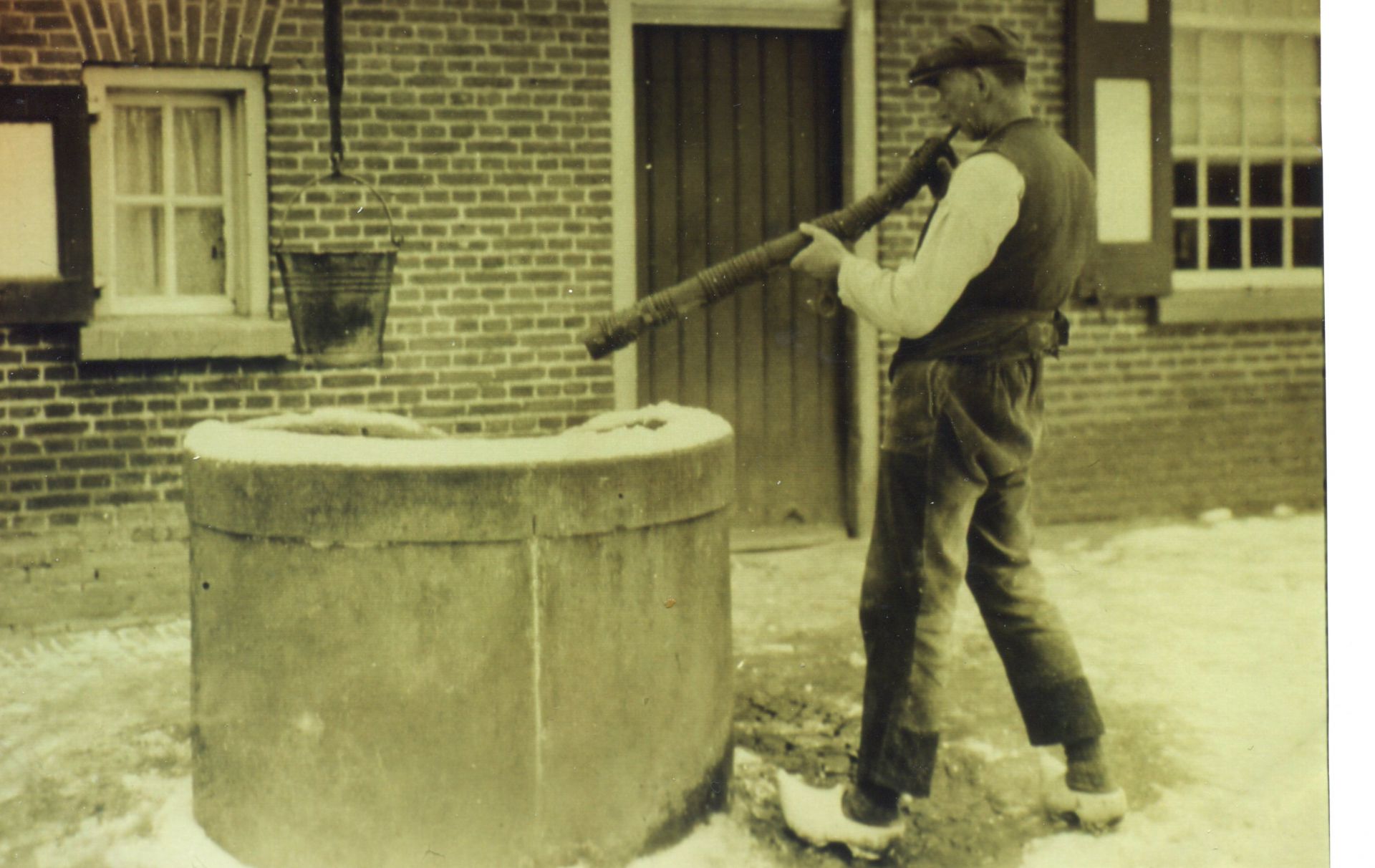 Warfare and military campaigns were also forbidden in many places from the first day of Advent until the octave of the Epiphany, so that a period of peace existed amongst Catholic nations during the time dedicated to the coming of the true King, the Prince of Peace.
Warfare and military campaigns were also forbidden in many places from the first day of Advent until the octave of the Epiphany, so that a period of peace existed amongst Catholic nations during the time dedicated to the coming of the true King, the Prince of Peace.
Yet, the penitential atmosphere of the Medieval Advent did not take away from the joyous expectation of the Messiah's Birth. As each week of Advent passed, Catholics united their ardent longings for the coming of Our Savior with the longing of Our Lady to see the face of her Divine Son.
Over time, this expectant joy was expressed through charming customs on the special feast days that marked the Advent period (St. Barbara's Day, St. Nicholas' Day, St. Lucy's Day, St. Thomas' Day).
The third Sunday of Advent announces that Christmas is fast approaching, and it is known as "Gaudete Sunday" in which the Church gives a foreshadowing of Christmas joy with rose vestments and the jubilant sound of the organ. The climax of this ever increasing joy is seen in the Golden Nights in which Catholic peoples of the past fervently made last preparations, spiritually and temporally, for the great feast of Christ's Birth.
Preparations for Christmas
Catholic peoples of the past, with their child-like spirit, strove to do everything that they could during Advent to give a fitting welcome to the Christ Child when He arrived.
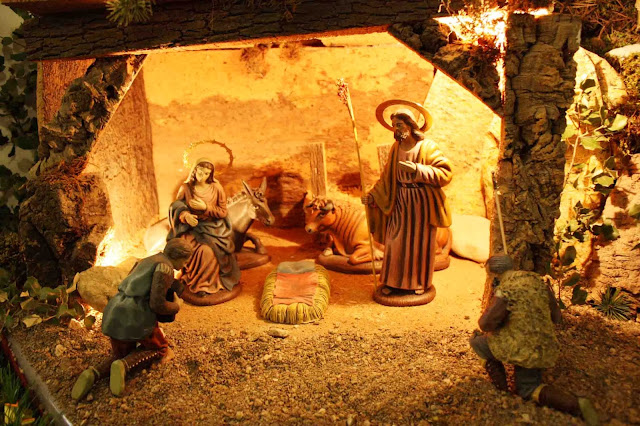 The Nativity Scene or Crèche was traditionally set up during Advent, often with an empty manger awaiting the Child Jesus' coming. In France, children placed a piece of straw in the manger for every sacrifice or good deed that they made during Advent to provide the Christ Child a comfortable bed for his arrival on Christmas Night. (11)
The Nativity Scene or Crèche was traditionally set up during Advent, often with an empty manger awaiting the Child Jesus' coming. In France, children placed a piece of straw in the manger for every sacrifice or good deed that they made during Advent to provide the Christ Child a comfortable bed for his arrival on Christmas Night. (11)
In Austria, the children wrote letters called "Christkindl Briefe" to the Christ Child telling Him their Advent resolutions and asking Him for special gifts. They sealed these letters and placed them on a windowsill, which were brought to the Christ Child by the children's Guardian Angels.
A good child could expect the letter to disappear on the first night that it was laid out, but the naughty child had to watch his letter sit on the windowsill a couple days before it was accepted by the Christ Child, a sure warning for that child to amend his ways to be ready for Christ's coming. (12)
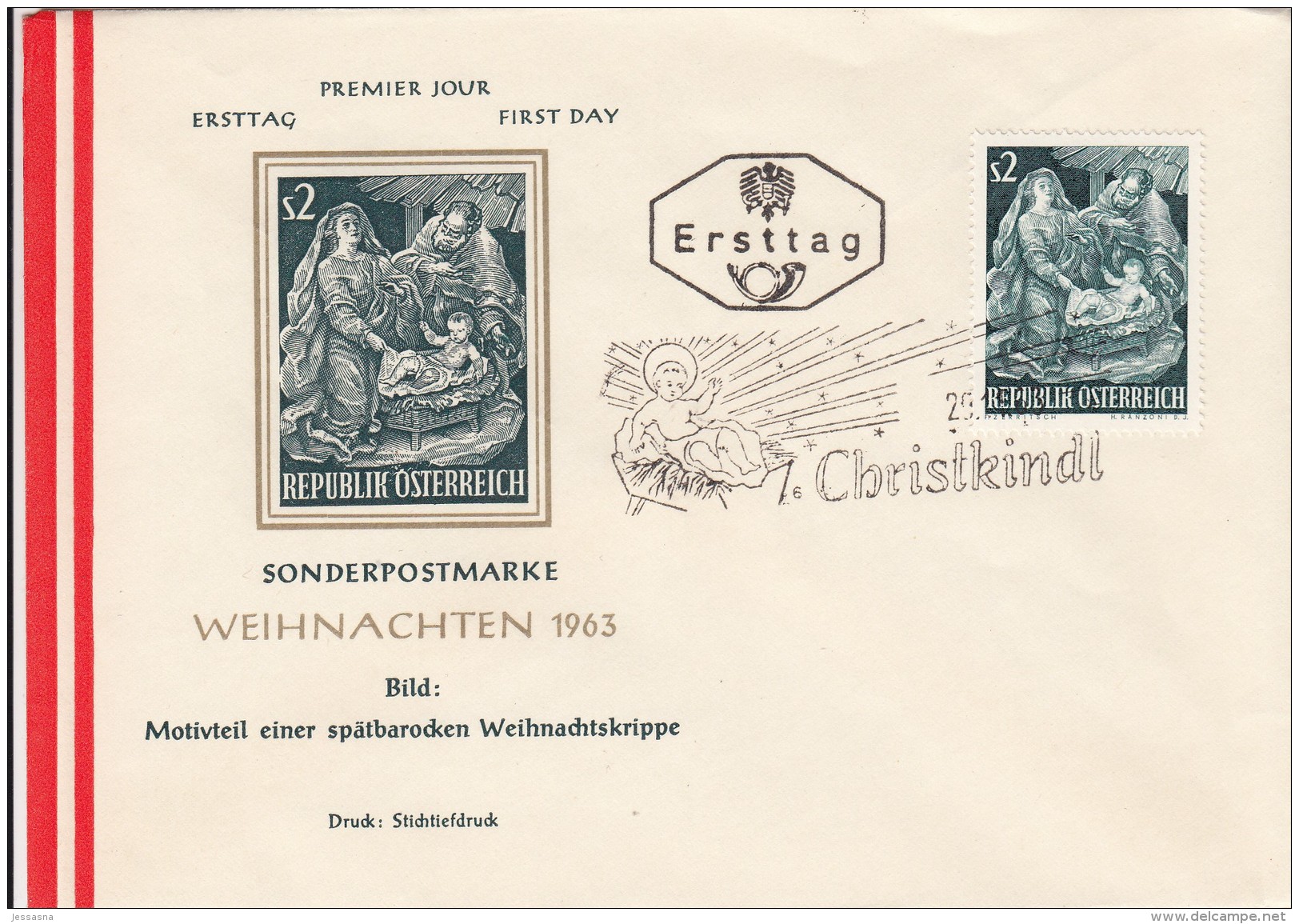 In many countries, the spare hours of Advent were spent in making Christmas toys and preparing for Nativity Plays and caroling. The young people made masks and costumes so that they would be properly attired as they went on their rounds of caroling during the Christmas Season. The elders taught the youth the traditional regional carols, which were transmitted orally from generation to generation. (13)
In many countries, the spare hours of Advent were spent in making Christmas toys and preparing for Nativity Plays and caroling. The young people made masks and costumes so that they would be properly attired as they went on their rounds of caroling during the Christmas Season. The elders taught the youth the traditional regional carols, which were transmitted orally from generation to generation. (13)
Let us strive to restore the spirit of a Catholic Advent by striving to make ourselves truly ready for the coming of Christ. This effort can counter the over-commercialized secular spirit that has taken its place.
Families can imitate the old ways of their Catholic ancestors in preparing for Christmas with practices that encourage a calm recollection rather than the boisterous celebrations of the secular world.
Advent would be well spent in reflecting on the Last Judgment, attending early morning Mass, making gifts, and preparing for Nativity Plays and caroling. Then, when Christmas arrives, the joy of Christ's Birth can emanate into society from truly Catholic homes that have made themselves ready for Our Lord's coming.
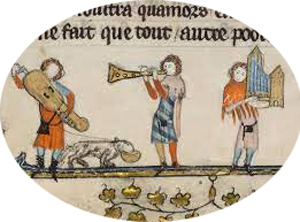

Posted December 22, 2021

Advent, traditionally a time to prepare
for the Second Coming of Christ
To become ready for the coming of the Lord, the Church gave us Advent as a period of penance and prayer to become ready so that by Christmas we can joyfully say "I am ready for the Judgment Day to see the Just Judge in His Glory." Indeed, it was a pious belief of many that Our Lord's Second Coming would come in Advent.
Advent is a new beginning of another liturgical year, a chance to prepare for the Second Coming of Christ as well as the coming of Our Lord in His Nativity.
In the Middle Ages, Catholics took this period of preparation seriously, treating it like a small Lent. Fasting, almsgiving and penance were practiced with fervor. Every action, word and thought was carefully directed towards insuring that the new Church year would begin well and that it would be a year of growth in sanctity and union with God.
The Advent Fast
The Council of Saragossa held in 380 stipulated that Catholics ought to attend Mass on all the days between December 17 and the feast of the Epiphany on January 6. Fasting was officially prescribed by St. Perpetuus of Tours in 480 when he decreed that every Monday, Wednesday and Friday from the feast of St. Martin (November 11) until Christmas would be a day of fasting.
Abstinence from flesh meat was also decreed for every day of Advent, and the offices of the Mass were celebrated as they were in Lent. (2) These fasting practices spread from France to England, Italy, Germany, Spain and the other countries of Christendom. (3)
These 40 days soon became known as Quadragesimal Sancti Martini (Forty Days Fast of St. Martin or St. Martin's Lent). The feasting and merriment at the feast of St. Martin was the last celebration that the Medieval Catholics had before the Advent fast, so it took on many aspects of Carnival. (4)
The fasting obligations varied from region to region including different days and lengths of time according to ecclesiastical precepts or private devotion, but they never acquired the status of a positive Ordinance. By the 9th century, the number of Sundays in Advent was reduced in Rome, and Advent was instituted as a liturgical season including four Sundays.

The sound of ligawka horn called the Polish people to the Rorate Mass
The Medieval spirit of Advent is well described by Dom Gueranger:
"We must look upon Advent in two different lights: first, as a time of preparation, properly so called, for the birth of Our Savior, by works of penance; and second, as a series of ecclesiastical Offices drawn up for the same purpose."
Indeed, in many Catholic countries this was the spirit with which Catholics observed the season: many people attended daily Mass and observed these weeks as a time of penance and contemplation to make themselves ready for the coming of the Christ Child.
The Rorate Mass
In some countries, "Golden Masses" or "Rorate Masses" were said before dawn every morning from the first Sunday of Advent until Christmas Eve. Men, women and children walked to these Masses carrying lit candles and torches. The Rorate Masses began in the pre-dawn darkness.

The Church illuminated only by candles
during the Rorate Masses
In the early mornings and evenings of Advent, the Polish people were reminded of the angelic trumpet call that will announce the Judgment Day by the deep resonating sound of men playing the ligawka, long horns two to three yards long made of willow or linden wood. These horns called the people to the early morning "Rorate" Mass. Men were awakened by this horn even if they were half a mile away, because the horn's sound travelled a long distance. (8)
This custom was – and still is – observed in the Netherlands in the province of Overijssel, where it is known as Midwinterhoorn Blazen (Blowing the Midwinter Horn), and is believed to have originated over 2,000 ago. The people from the area begin making their Midwinter Horns in Advent out of birch bark. The horns are blown over frozen wells to carry the solemn tones throughout the whole countryside. The stirring tone of these horns symbolically banishes winter and announces the coming of Our Lord.
One master horn maker from Denekamp described the sound of the horns: "On a winter's night when you hear many horns, sounding from all directions, across ice-sheeted meadows and everything is black and still, then the music is beautiful. The sound carries great distances – sometimes as far as three kilometers." (9)
Contemplation & penance in society
Many of the rules followed in the penitential season of Lent were also observed in Advent, although with less rigor. Marriages were forbidden during Advent and many Catholics abstained from the marital embrace. In Central and Northern European countries, peasants had to have all the field work finished before the beginning of Advent. Unnecessary travel and public amusements were also limited. In many countries, loud parties, celebrations and dances were forbidden during the Advent season. (10)

Blowing the ligawka over a well
for the sound to travel farther
Yet, the penitential atmosphere of the Medieval Advent did not take away from the joyous expectation of the Messiah's Birth. As each week of Advent passed, Catholics united their ardent longings for the coming of Our Savior with the longing of Our Lady to see the face of her Divine Son.
Over time, this expectant joy was expressed through charming customs on the special feast days that marked the Advent period (St. Barbara's Day, St. Nicholas' Day, St. Lucy's Day, St. Thomas' Day).
The third Sunday of Advent announces that Christmas is fast approaching, and it is known as "Gaudete Sunday" in which the Church gives a foreshadowing of Christmas joy with rose vestments and the jubilant sound of the organ. The climax of this ever increasing joy is seen in the Golden Nights in which Catholic peoples of the past fervently made last preparations, spiritually and temporally, for the great feast of Christ's Birth.
Preparations for Christmas
Catholic peoples of the past, with their child-like spirit, strove to do everything that they could during Advent to give a fitting welcome to the Christ Child when He arrived.

The Church illuminated only by candles during the Rorate Masses
In Austria, the children wrote letters called "Christkindl Briefe" to the Christ Child telling Him their Advent resolutions and asking Him for special gifts. They sealed these letters and placed them on a windowsill, which were brought to the Christ Child by the children's Guardian Angels.
A good child could expect the letter to disappear on the first night that it was laid out, but the naughty child had to watch his letter sit on the windowsill a couple days before it was accepted by the Christ Child, a sure warning for that child to amend his ways to be ready for Christ's coming. (12)

The Christkindl Briefe sent by children
to the Christ Child
Let us strive to restore the spirit of a Catholic Advent by striving to make ourselves truly ready for the coming of Christ. This effort can counter the over-commercialized secular spirit that has taken its place.
Families can imitate the old ways of their Catholic ancestors in preparing for Christmas with practices that encourage a calm recollection rather than the boisterous celebrations of the secular world.
Advent would be well spent in reflecting on the Last Judgment, attending early morning Mass, making gifts, and preparing for Nativity Plays and caroling. Then, when Christmas arrives, the joy of Christ's Birth can emanate into society from truly Catholic homes that have made themselves ready for Our Lord's coming.


- Sophie Hodorowicz Knab, Polish Customs, Traditions and Folklore (New York: Hippocrene Books, 1996), p. 21.
- https://fatima.org/news-views/the-true-advent-fast/
- Dom Prosper Guéranger, The Liturgical Year, vol. I (Fitzwilliam, New Hampshire: Loreto Publications, 2013) p. 22.
- Ibid, p. 23
- https://www.liturgicalartsjournal.com/2019/12/the-traditional-pre-1917-advent-fast-in.html
- Dom Prosper Guéranger, The Liturgical Year, vol. I
- www.fisheaters.com/roratecaeli.html
- Sophie Hodorowicz Knab, Polish Customs, Traditions and Folklore, p. 22.
- Dorothy Gladys Spicer, Festivals of Western Europe (New York: The H. W. Wilson Company, 1958), p. 154-155.
- https://www.arcanum.com/hu/online-kiadvanyok/MagyarNeprajz-magyar-neprajz-2/vii-nepszokas-nephit-nepi-vallasossag-A33C/szokasok-A355/jeles-napok-unnepi-szokasok-A596/december-A912/advent-A94D/
- https://www.holytrinitygerman.org/adventcustoms.html
- Maria Augusta Trapp, Around the Year with the Trapp Family (New York: Pantheon Books, 1955), p. 28.
- Sophie Hodorowicz Knab, Polish Customs, Traditions and Folklore, p. 21.
- https://www.fisheaters.com/customsadvent2a.html
Posted December 22, 2021
______________________
______________________








